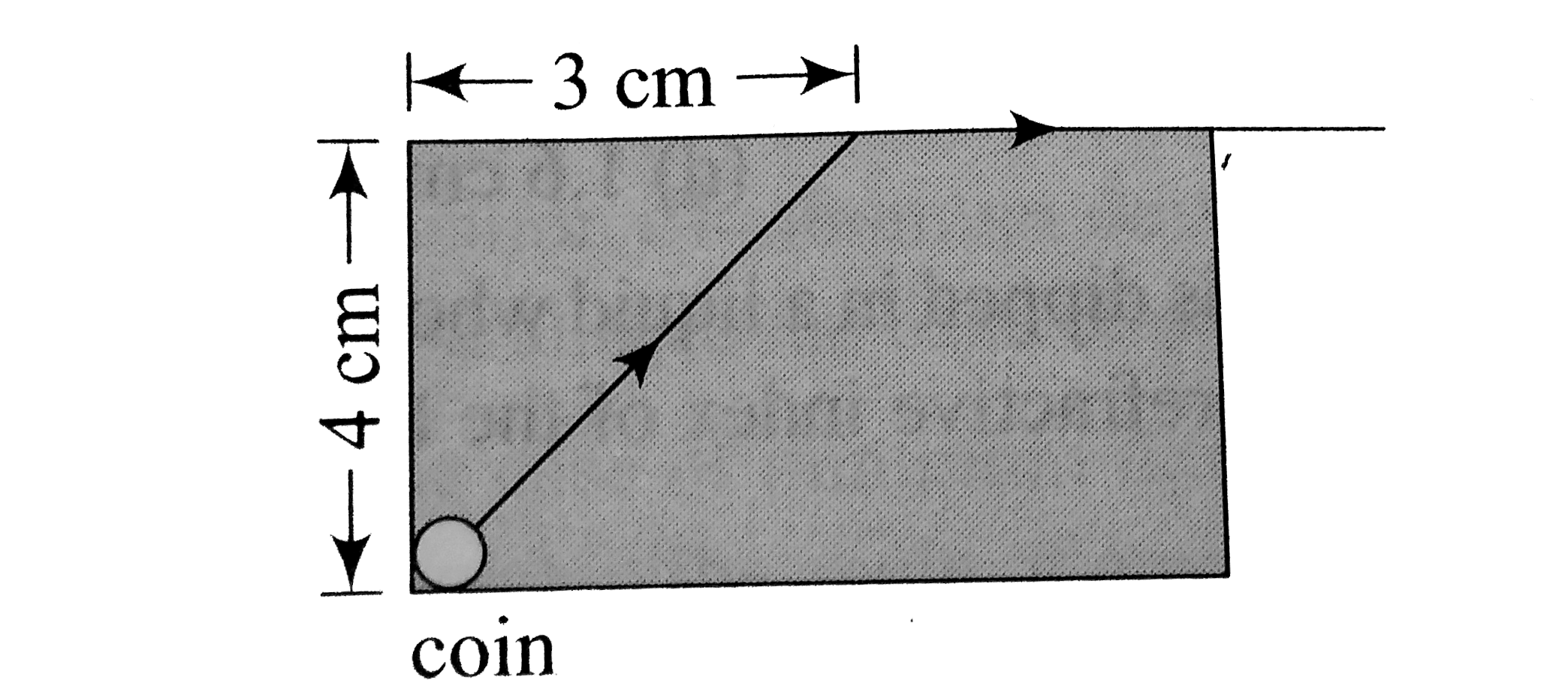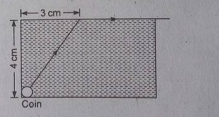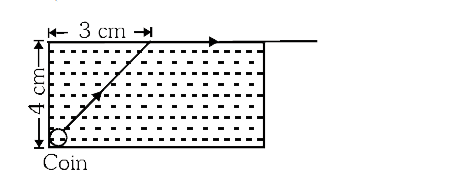A liquid cannot withstand a shear stress. How does this impty that the surface of a liquid at rest must be level, i.e., normal to the gravitational force?
To understand why a liquid at rest must have a surface that is level (normal to the gravitational force), we need to analyze the behavior of liquids under shear stress and the forces acting on them. Here’s a step-by-step solution:
Step 1: Understanding Shear Stress in Liquids
A liquid cannot withstand shear stress. This means that if a shear force is applied to a liquid, it will flow and not maintain its shape. Unlike solids, which can resist such forces, liquids will deform and flow in response to shear stress.
Hint: Recall the definition of shear stress and how it affects the shape of materials.
Step 2: Analyzing Forces on a Liquid Element
Consider a small element of liquid at rest. The only forces acting on this element are the gravitational force acting downwards and the pressure forces acting on its surfaces. The gravitational force pulls the liquid downwards, while the pressure forces act perpendicular to the surfaces of the liquid element.
Hint: Think about how gravity affects the distribution of pressure in a liquid.
Step 3: Implication of Non-Perpendicular Surface
If the surface of the liquid is not level (not perpendicular to the gravitational force), there would be a component of the gravitational force acting along the surface. This component would create a shear stress on the liquid, causing it to flow. Since we established that a liquid cannot withstand shear stress, this situation is not possible if the liquid is at rest.
Hint: Visualize what happens to a tilted surface of a liquid and how gravity would cause it to flow.
Step 4: Conclusion on the Surface Level
Therefore, for a liquid at rest, the surface must be perpendicular to the gravitational force. This ensures that there are no shear stresses acting on the liquid, allowing it to remain in equilibrium. Hence, the surface of the liquid must be level.
Hint: Consider the equilibrium condition of forces acting on the liquid and how they relate to the surface orientation.
Final Summary
In summary, since a liquid cannot withstand shear stress, the only way for it to remain at rest is for its surface to be level, which means it is normal to the gravitational force acting on it. This ensures that there are no components of force acting along the surface, preventing any flow.
A liquid cannot withstand shear stress. This means that if a shear force is applied to a liquid, it will flow and not maintain its shape. Unlike solids, which can resist such forces, liquids will deform and flow in response to shear stress.
Consider a small element of liquid at rest. The only forces acting on this element are the gravitational force acting downwards and the pressure forces acting on its surfaces. The gravitational force pulls the liquid downwards, while the pressure forces act perpendicular to the surfaces of the liquid element.
If the surface of the liquid is not level (not perpendicular to the gravitational force), there would be a component of the gravitational force acting along the surface. This component would create a shear stress on the liquid, causing it to flow. Since we established that a liquid cannot withstand shear stress, this situation is not possible if the liquid is at rest.
Therefore, for a liquid at rest, the surface must be perpendicular to the gravitational force. This ensures that there are no shear stresses acting on the liquid, allowing it to remain in equilibrium. Hence, the surface of the liquid must be level.
In summary, since a liquid cannot withstand shear stress, the only way for it to remain at rest is for its surface to be level, which means it is normal to the gravitational force acting on it. This ensures that there are no components of force acting along the surface, preventing any flow.
Topper's Solved these Questions
- Mechanical Properties of fluidsBook:SL ARORAChapter:Mechanical Properties of fluidsExercise:Exercise
Explore 459 Videos
- Mathematical toolsBook:SL ARORAChapter:Mathematical toolsExercise:Exercise
Explore 20 Videos
- Mechanical Properties of SolidsBook:SL ARORAChapter:Mechanical Properties of SolidsExercise:Example
Explore 113 Videos
Similar Questions
Knowledge Check
How does the surface tension of a liquid vary with increase in temperature ?
ARemains sameBDecreasesCIncreasesDNo regular pattern is followedHow does the surface tension of a liquid vary with increase in temperature ?
ARemains sameBDecreasesCIncreasesDNo regular pattern is followedThe direction of the force exerted on a surface by a liquid at rest is
Anormal to the surfaceBparallel to the surfaceCtangential to the surfaceD30∘ to the surface
A small coin is resting on the bottom of a beaker filled with a liquid. A ray of light from the coin travels up to the surface of the liquid and moves along its surface (see figure ).
How fast is the light travelling in the liquid ?

View SolutionA small coin is resting on the bottom of a beaker filled with a liquid. A ray of light from the coin travels upto the surface of the liquid and moves along its surface (see figure)

How fast is the light travelling in the liquid ?
View SolutionA small coin is resting on the bottom of a beaker filled with a liquid. A ray of light from the coin travels upto the surface of the liquid and moves along its surface (see figure)

How fast is the light travelling in the liquid ?
View SolutionA small coin is resting on the bottom of a beaker filled with a liquid. A ray of light from the coin travels upto the surface of the liquid and moves along its surface How fast is the light travelling the liquid ?

View SolutionThe force of interaction between the molecules of same substance is called cohesive force hile force of interaction between molecules of different substances is called adhesive force . Both the forces are attracive and have a range of about 10 A . If we consider a molecule . A well inside a liquid we find that it is equally attracted by the surrounding molecules in all the directions ( with a sphere of radius 10 Å ) and so it does not experience any resultant force . On or near the surface of a liquid , the molecules do not exist on the free side and so a molecule ( say B ) experiences a resultant force vertically downwards into the liquid . For this reason , the molecules of the surface have a tendency to go into the liquid . Thus , the surface tends to contract and gives rise to surface tension .
As surface molecules like B experience a net downward force of cohension and have tendency to go down , so in increasing the area of the surface more molecules are to be shifted to the surface from inside . Thus , more mechnical work will have to be done against the net downward force of cohension . This work is stored by the molecules in the surfaces as potential energy called free surface energy .
Furthermore , molcules like P , in contact with the liquid will stick to the solid surface , i.e will meet it if the force of adhesion A is greater than net force of cohension C . The liquid will not the solid surface if C>A
Also , molecules like Q at the surface in contact with the solid will experience a net force of cohension CR . If adhesion A is greater then cohension CR , the resultant force will be F . As the liquid can't support tangential force , F must be perpendicular to the surface of the liquid . So , the menisus will be concave and the angle of contact will be acute (>90∘) . However , if adhesion is lesser than cohension , the resultant force F will be directed into the liquid and so the menisus ( which is perpendicular to F as liquid support tangential force ) will be convex and the angle of contact will be obtuse (>90∘)

A liquid particle B , which is present in the vicinity particle A can exert a force on A if the distance of B from A is
View Solution

